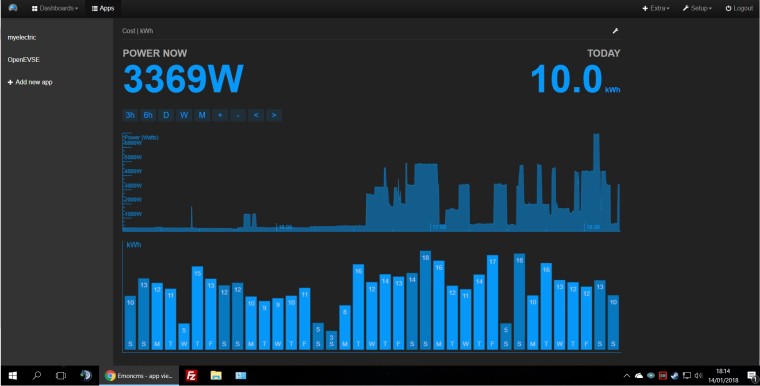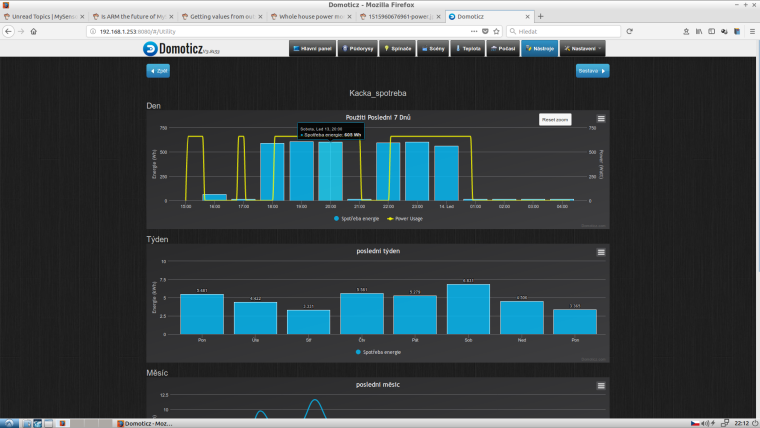Whole house power monitoring.
-
Interested in the topic as well.
Also, would it be possible get the power for arduino from the clamp itself, wirelessly? :D
or you must have separate power source for arduino (I know this later is the case, but... you never know what smart people here can come up with) -
lately I discovered EnOcean. They produce energy harvesting sensors for home automation. E.g. a batteryless push button :) It harvests energy from button presses - how cool is that :D They also have other energy harvesting technologies, but I don't think they would provide enough power for arduino board that measures the current and voltage continuously ...
-
quick google search gave me this https://electronics.stackexchange.com/questions/189425/leach-circuit-to-power-microcontroller
-
lately I discovered EnOcean. They produce energy harvesting sensors for home automation. E.g. a batteryless push button :) It harvests energy from button presses - how cool is that :D They also have other energy harvesting technologies, but I don't think they would provide enough power for arduino board that measures the current and voltage continuously ...
-
@gohan I don't know, I just pointed out that it may be possible ;)
-
https://openenergymonitor.org/forum-archive/node/58.html then you add the mysensors code for communication.
-
@rozpruwacz Why would want energy harvesting on an energy meter that is actually measuring the mains? You can just use a power supply and you are fine. Anyway, if you want to go DIY look at openenergymonitor site on how to build the sensor
-
@gohan said in Whole house power monitoring.:
Why would want energy harvesting on an energy meter that
I live in building where meter is in a common locker, thus no plugs nor power supplies.
-
@dakipro then you should probably have a breaker box in the apartment, so you could put it there instead
@gohan said in Whole house power monitoring.:
@dakipro then you should probably have a breaker box in the apartment, so you could put it there instead
That's a good idea but it's a bit tight in there :(
-
@gohan said in Whole house power monitoring.:
@dakipro then you should probably have a breaker box in the apartment, so you could put it there instead
That's a good idea but it's a bit tight in there :(
-
I'm using an arduino pro mini with an W500 Ethernet module connected directly to router,and a clamp from ebay(100amps i think). arduino and w500 fits inside a small box and its inside main power box,clamped to the main wire from main eletric deferential . I have the (ATI) Telecomonication box at side of power box so its easy to connect to the router. i dont use transformer for volt read,just read Amps because my power its very stable at 230/235v and this is just for " power waste "control
on first moth that i build it i saved 30€/moth in power(i not a commercial advertisement :P ).i had the electric resistance from water solar heating panel (3000w) working during the night,useless because we don't need hot water in morning,only at end of the day. so now i have another arduino that handle the hot water if there is no enough sun during the day... ( arduino pro minifor the win!!!:+1: )
This is a screenshot from my emoncms page. like you see my wife its doing cakes and dinner,and the oven and induction plate eat a lot of power 
-
@gohan said in Whole house power monitoring.:
https://openenergymonitor.org/forum-archive/node/58.html then you add the mysensors code for communication.
+1 to that
I have been using a single clamp sensor on my neutral at the power meter (SCT-030) hooked to an arduino/ESP8266
It's been working great close to 3 years now with an accuracy of +- 7%
I even use the readings to detect brown-outs and trigger devices to original state after power flips back to mains from the back-up (I live in an area where brown-outs , or power-cuts as we call them , are quite common)

-
+/-7% is good, because Domoticz has it own error -8% when energy consumption calculation is done by Domoticz.
When I send 660 W constantly a few hours, I obtain energy consumption 604 - 609 Wh in this interval :o(
They do not add last 5 min energy consumption in one hour interval ( Argument - because data arrived not at xx:00:00 but XX:00:05 )
Look at Domoticz forum about this bug, if interested.
Boys from Domoticz said - it is not important ....
-
+/-7% is good, because Domoticz has it own error -8% when energy consumption calculation is done by Domoticz.
When I send 660 W constantly a few hours, I obtain energy consumption 604 - 609 Wh in this interval :o(
They do not add last 5 min energy consumption in one hour interval ( Argument - because data arrived not at xx:00:00 but XX:00:05 )
Look at Domoticz forum about this bug, if interested.
Boys from Domoticz said - it is not important ....
